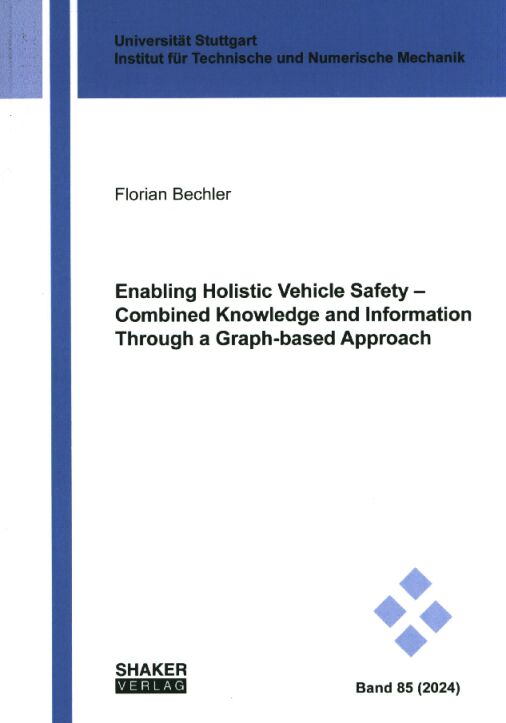书名:Enabling holistic vehicle safety - combined knowledge and information through a graph-based approach
出版时间:2024
出版社:Shaker Verlag
摘要
There have been many developments in the field of vehicle safety in recent years and decades. A great amount of knowledge has been gained about why serious injuries or fatalities occur in traffic accidents, and what needs to be done to better protect occupants from the consequences of an accident, or even to prevent accidents from happening in the first place. The number of traffic fatalities has fallen dramatically but has remained constant in recent years, due to the high complexity of the critical driving scenarios that haven't been, or cannot be, addressed yet. A wide variety of actuators work with different sensors to protect the occupants in the best possible way. At present, vehicle safety is based on findings from injury values, crash pulses, and driving kinematics, which leads to intervention strategies that are divided into separate areas of active and passive safety. Integral driving safety describes the approach of combining these areas. In this work, the idea is to combine the collected knowledge in different areas of vehicle safety with the available sensor information to get a holistic picture of the current driving situation. Based on the principle that with more information, better decisions can be made, or critical driving situations can be addressed that cannot currently be solved, a universal graph-based model for driving scenarios is developed to map the complexity of driving scenarios and to derive an optimized and scenario-based intervention strategy. This novel approach enables the inclusion of sub-models, expert knowledge, results from previous simulations, and databases. The resulting graph can be dynamically extended for further objects or occupants to take all available information into account in a critical event. Data from real driving scenarios from the interior and exterior of the vehicle is used as input. A framework is presented in which the graph-based model provides safety-relevant information from a real driving scenario, which is then used in a decision-making process to trigger different vehicle safety systems. An example of the decision process, in which the states and actuators are modeled as a partially observable Markov decision process (POMDP), shows how the airbag efficiency can be optimized by influencing the head position before a collision. This approach can be extended in further iterations to include additional parameters such as driving environment, occupant occupancy, and seat positions to optimize the intervention strategy for the occupants. The proposed framework integrates scenario-based driving dynamics and existing knowledge from previously separate safety systems with individual activation logic and trigger points to enable holistic intervention strategies for vehicle safety for the first time. It lays the foundation for considering new safety hardware, sensor information, and safety functions through a modular and holistic approach.
查看更多
目录
Enabling Holistic Vehicle Safety -Combined Knowledge and Information Through a Graph-based Approach a1
查看PDF
查看更多
馆藏单位
中国科学技术信息研究所



